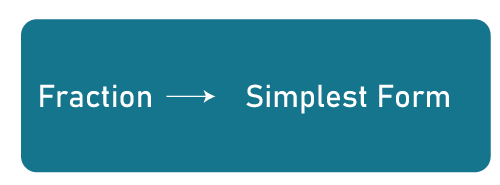0.21 as a Fraction in Simplest FormFractions have been used in mathematics for thousands of years, with evidence of their use dating back to ancient civilizations such as the Egyptians and Babylonians. These early cultures used fractions to solve problems related to trade and commerce, such as dividing goods into equal parts and measuring land. The earliest known written record of fractions comes from the ancient Egyptians, who used them to solve problems related to trade and commerce. They used a notation similar to our modern-day fractions, with a line separating the numerator and denominator. The numerator represented the number of parts, and the denominator represented the number of equal parts. The Babylonians, who lived in Mesopotamia around 2000 BCE, used fractions to perform calculations related to their agricultural system. They also developed a sophisticated numeration system, allowing them to perform complex calculations with fractions. In ancient Greece, the mathematician Euclid wrote "Elements," a collection of 13 books on mathematics that included a section on fractions. He defined a fraction as "a part of a unit" and provided rules for manipulating and simplifying fractions. The Indian mathematician Brahmagupta lived in the 7th century CE and was one of the first mathematicians to write extensively about fractions. He developed algorithms for performing arithmetic operations with fractions and provided a method for finding the greatest common divisor of two numbers, which is crucial for simplifying fractions. Fractions continued to be developed and refined over the centuries. In the 17th century, the mathematician John Napier developed logarithms, which allowed for the efficient computation of complex arithmetic operations with fractions. The 18th century saw the development of the decimal system, which represented fractions as decimals and allowed for even more efficient computation. In modern times, fractions are used in various applications, including engineering, science, finance, and everyday life. They are also a fundamental part of mathematical education, with students learning about fractions in elementary school and continuing to study them in greater depth throughout their education. Fractions have a rich and long history, with evidence of their use dating back to ancient civilizations such as the Egyptians and Babylonians. Over the centuries, fractions have been developed and refined, with important contributions from mathematicians such as Euclid, Brahmagupta, and John Napier. Today, fractions are used in various applications and are a fundamental part of mathematical education. Simplest FractionA fraction is a mathematical expression that represents a part of a whole. It is written as two numbers separated by a fraction bar, such as 1/2. The top number, called the numerator, represents the part, and the bottom number, called the denominator, represents the whole. The simplest form of a fraction refers to reducing the fraction to its smallest possible size while still representing the same part of the whole. This is achieved by dividing the numerator and denominator by their greatest common factor if one exists. The result is the fraction in its simplest form. Simplifying a fraction is important because it helps make it easier to understand and use in calculations. For example, comparing two fractions is easier to compare their simplified forms rather than their original ones. Additionally, when working with fractions in arithmetic or algebra, it is often necessary to simplify them to perform addition, subtraction, multiplication, or division operations. 
Follow These Steps To Simplify a FractionStep 1: Determine the greatest common factor of the numerator and denominator. Step 2: Divide the numerator and denominator by their greatest common factor. Step 3: Repeat steps 1 and 2 until the greatest common factor is 1. For example, consider the fraction 60/72. To simplify this fraction, we can find the greatest common factor of 60 and 72, 12. Then, we can divide the numerator and denominator by 12 to get 5/6. The fraction 5/6 is in its simplest form, as the numerator and denominator have no common factors other than 1. In some cases, the fraction may already be in its simplest form, such as the fraction 2/3. In this case, no further simplification is necessary. It is important to note that simplifying a fraction does not change the value of the fraction. For example, the fraction 2/4 represents the same value as the fraction 1/2, even though 1/2 is in its simplest form. The concept of the simplest form of a fraction is important in mathematics. Simplifying a fraction to its smallest possible size makes it easier to understand and use in calculations and helps reduce the fraction's size for comparisons with other fractions. Simplifying a fraction involves dividing the numerator and denominator by their greatest common factor until the greatest common factor is 1. To Convert 0.21 to a Fraction, We Can Follow these Steps:Step 1: Multiply 0.21 by a power of 10 to make it a whole number. For 0.21, we can multiply it by 100 to get 21. This is because 0.21 is equivalent to 21/100, a fraction. Step 2: Write the result as a fraction. Since 0.21 equals 21/100, we can write it as a fraction by placing 21 over 100. Step 3: Simplify the fraction if possible. In this case, the fraction 21/100 is already in its simplest form. Therefore, the fraction equivalent of 0.21 in its simplest form is 21/100.
Next TopicWhat is .06 as a Fraction
|
 For Videos Join Our Youtube Channel: Join Now
For Videos Join Our Youtube Channel: Join Now
Feedback
- Send your Feedback to [email protected]
Help Others, Please Share









